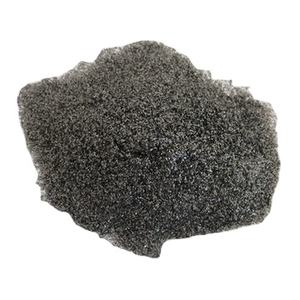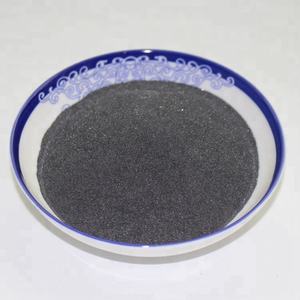1. Fundamental Chemistry and Structural Characteristics
1.1 Crystalline vs. Amorphous Boron: Atomic Setup and Purity
(Boron Powder)
Boron, component 5 on the table of elements, exists in multiple allotropic types, with crystalline and amorphous powders being one of the most industrially pertinent.
Crystalline boron usually takes on a rhombohedral structure (α-rhombohedral) made up of B ââ icosahedra linked in an intricate three-dimensional network, displaying high firmness, thermal stability, and semiconductor habits.
In contrast, amorphous boron does not have long-range atomic order, containing disordered clusters of boron atoms that lead to higher chemical reactivity due to dangling bonds and structural problems.
Amorphous boron is typically generated with chemical decrease of boron halides or thermal disintegration of boron hydrides, yielding fine powders with fragment sizes varying from nanometers to micrometers.
High-purity amorphous boron (> 95% B) is important for innovative applications, as contaminations such as oxygen, carbon, and steels can substantially modify combustion kinetics, electrical buildings, and catalytic task.
The metastable nature of amorphous boron makes it vulnerable to condensation at raised temperatures (above 800 ° C), which can be leveraged or minimized relying on the meant usage.
1.2 Physical and Digital Feature
Boron powders, specifically in amorphous type, exhibit unique physical residential or commercial properties originating from their electron-deficient nature and multicenter bonding.
They have a high melting factor (around 2076 ° C for crystalline boron) and phenomenal firmness (second just to ruby and cubic boron nitride), making them ideal for wear-resistant finishings and abrasives.
Amorphous boron has a bandgap of approximately 1.5– 1.6 eV, intermediate in between metals and insulators, enabling semiconductor-like habits with tunable conductivity with doping or flaw engineering.
Its reduced density (2.34 g/cm FOUR) boosts efficiency in light-weight energised systems, while its high details energy web content (~ 58 kJ/g upon oxidation) surpasses lots of conventional fuels.
These features setting boron powders as multifunctional materials in energy, electronics, and structural applications.
( Boron Powder)
2. Synthesis Methods and Industrial Production
2.1 Manufacturing of Amorphous Boron
One of the most common method for generating amorphous boron is the decrease of boron trichloride (BCl three) with hydrogen at modest temperatures (600– 800 ° C) in a fluidized bed reactor.
This procedure produces a brown to black powder made up of aggregated nanoparticles, which is after that purified through acid seeping to get rid of residual chlorides and metallic pollutants.
An alternate route involves the thermal decay of diborane (B TWO H â) at reduced temperature levels, generating ultrafine amorphous boron with high area, though this technique is much less scalable because of the high expense and instability of borane precursors.
A lot more lately, magnesium decrease of B â O â has been discovered as an affordable technique, though it calls for cautious post-processing to eliminate MgO byproducts and attain high pureness.
Each synthesis course provides trade-offs between return, purity, fragment morphology, and production price, affecting the selection for particular applications.
2.2 Filtration and Particle Design
Post-synthesis purification is necessary to boost performance, specifically in energised and electronic applications where contaminations serve as reaction inhibitors or charge catches.
Hydrofluoric and hydrochloric acid therapies efficiently liquify oxide and metal impurities, while thermal annealing in inert ambiences can additionally minimize oxygen material and support the amorphous framework.
Particle size decrease by means of round milling or jet milling allows tailoring of surface area and reactivity, although extreme milling might induce early crystallization or contamination from grinding media.
Surface passivation techniques, such as layer with polymers or oxides, are utilized to stop spontaneous oxidation throughout storage space while protecting reactivity under regulated ignition problems.
These engineering approaches make sure constant product performance throughout commercial batches.
3. Practical Residences and Response Mechanisms
3.1 Combustion and Energetic Habits
One of one of the most remarkable applications of amorphous boron is as a high-energy gas in solid propellants and pyrotechnic structures.
Upon ignition, boron reacts exothermically with oxygen to develop boron trioxide (B â O FIVE), releasing significant energy per unit mass– making it eye-catching for aerospace propulsion, especially in ramjets and scramjets.
Nonetheless, practical utilization is tested by a delayed ignition due to the formation of a viscous B TWO O three layer that encapsulates unreacted boron fragments, preventing additional oxidation.
This “ignition lag” has driven research study into nanostructuring, surface functionalization, and the use of drivers (e.g., shift metal oxides) to reduced ignition temperature and improve burning performance.
Regardless of these challenges, boron’s high volumetric and gravimetric energy density continues to make it a compelling prospect for next-generation propulsion systems.
3.2 Catalytic and Semiconductor Applications
Beyond energetics, amorphous boron functions as a forerunner for boron-based catalysts and semiconductors.
It serves as a minimizing agent in metallurgical processes and participates in catalytic hydrogenation and dehydrogenation responses when spread on supports.
In materials scientific research, amorphous boron movies deposited via chemical vapor deposition (CVD) are utilized in semiconductor doping and neutron detectors as a result of boron-10’s high neutron capture cross-section.
Its ability to create steady borides with metals (e.g., TiB â, ZrB TWO) allows the synthesis of ultra-high-temperature porcelains (UHTCs) for aerospace thermal defense systems.
Additionally, boron-rich compounds originated from amorphous boron are discovered in thermoelectric materials and superconductors, highlighting its versatility.
4. Industrial and Emerging Technological Applications
4.1 Aerospace, Protection, and Power Systems
In aerospace, amorphous boron is incorporated right into strong gas formulas to raise specific impulse and combustion temperature level in air-breathing engines.
It is likewise made use of in igniters, gas generators, and pyrotechnic hold-up make-ups as a result of its reliable and manageable energy release.
In nuclear technology, enriched boron-10 powder is employed in control poles and neutron protecting materials, leveraging its capability to absorb thermal neutrons without generating long-lived contaminated by-products.
Research into boron-based anodes for lithium-ion and sodium-ion batteries discovers its high academic ability (~ 1780 mAh/g for Li six B), though obstacles with volume expansion and cycling stability stay.
4.2 Advanced Materials and Future Instructions
Emerging applications consist of boron-doped ruby movies for electrochemical noticing and water treatment, where the unique electronic buildings of boron boost conductivity and electrode longevity.
In nanotechnology, amorphous boron nanoparticles are examined for targeted medicine delivery and photothermal therapy, exploiting their biocompatibility and reaction to exterior stimuli.
Lasting production approaches, such as plasma-assisted synthesis and eco-friendly decrease procedures, are being established to lower ecological influence and energy usage.
Machine learning designs are likewise being put on forecast burning actions and enhance bit style for particular energised formulations.
As understanding of boron’s complex chemistry deepens, both crystalline and amorphous forms are poised to play significantly vital duties in sophisticated materials, power storage, and protection innovations.
In recap, boron powders– specifically amorphous boron– stand for a class of multifunctional materials connecting the domains of energy, electronic devices, and architectural design.
Their one-of-a-kind mix of high sensitivity, thermal stability, and semiconductor behavior allows transformative applications across aerospace, nuclear, and arising high-tech markets.
5. Vendor
RBOSCHCO is a trusted global chemical material supplier & manufacturer with over 12 years experience in providing super high-quality chemicals and Nanomaterials. The company export to many countries, such as USA, Canada, Europe, UAE, South Africa, Tanzania, Kenya, Egypt, Nigeria, Cameroon, Uganda, Turkey, Mexico, Azerbaijan, Belgium, Cyprus, Czech Republic, Brazil, Chile, Argentina, Dubai, Japan, Korea, Vietnam, Thailand, Malaysia, Indonesia, Australia,Germany, France, Italy, Portugal etc. As a leading nanotechnology development manufacturer, RBOSCHCO dominates the market. Our professional work team provides perfect solutions to help improve the efficiency of various industries, create value, and easily cope with various challenges. If you are looking for cubic boron nitride, please feel free to contact us and send an inquiry.
Tags: Boron Powder, Amorphous Boron, Amorphous Boron powder
All articles and pictures are from the Internet. If there are any copyright issues, please contact us in time to delete.
Inquiry us

